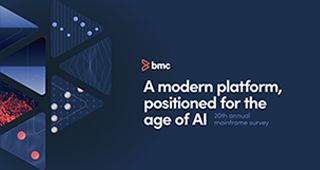Meet Divya, an IT manager at a large financial services company. Every day, Divya faces the challenge of maintaining the company’s critical mainframe systems while navigating the rapid pace of technological advancements. Recently, Divya’s organization has been contemplating how to address its aging mainframe workforce while also maintaining the expected levels of service. It has three choices: 1) Get off the mainframe, 2) Become caretakers of the mainframe, or 3) Modernize the mainframe in place.
The dilemma
The first option, getting off the mainframe, is quite a project. As we have seen in the industry, many have tried and failed. One needs to ask, “Why replicate a system that is providing core business value? What is the true benefit?” In doing this, companies introduce cost and a lot of risk and disruptions to operations, and stifle business innovation. In this technology swap, organizations retiring their mainframes must model effort, cost, and risks that they have never considered before as they replatform, refactor, and replace critical applications, systems, and infrastructure. Let’s not forget that the effort of moving off the mainframe is consuming person hours that would have been spent delivering more business innovations. So, again, why would this be a preferred option?
The second option, being mere caretakers of the mainframe, means maintaining the status quo without modernizing—keeping the lights on, in other words. As caretakers, the team is no longer using the mainframe strategically, and nothing is being done to retire it. This risks stagnation and obsolescence in a rapidly evolving technological landscape. Essentially, the decision here is to just “let it die.” As many core systems are on mainframes, this is simply not an option, especially in the financial sector, where risk and continuity of service is regulated.
If no innovation is delivered, business is lost and customers move on since their expectations are continuously evolving. As customers, we are always “wonderfully dissatisfied” with functionality and demand more not less, and businesses need to keep up. The only strategic and advantageous choice, Divya realizes, is to modernize the mainframe in place, which avoids a world of upheaval and the expense of a full system replication.
What does “modernize the mainframe in place” mean?
“Modernizing the mainframe in place” refers to the process of:
- Updating and enhancing the existing mainframe ecosystem without the need to replicate or migrate it to entirely new platforms
- Leveraging intuitive and automated technologies and practices to meet contemporary business needs and make the platform more accessible
This approach leverages the mainframe’s steadfast reliability, scalability, and security while layering in a completely modern, intuitive experience from generative artificial intelligence (GenAI) and addressing system custodianship and application production to keep pace with business demands. In fact, our customers have done it, and can attest that having a good transformation partner with the right experience and shared best practices can make the process significantly easier.
Why now?
The urgency to modernize the mainframe is here now, and it cannot be ignored. As technology rapidly advances, organizations that fail to update their legacy systems lose their competitive edge amid the consumer appetite for increasingly digital, real-time access to financial institutions, utility providers, or marketplaces, and more.
Delaying modernization can lead to increased vulnerabilities, higher maintenance costs, and difficulty attracting top talent. By starting now, organizations ensure their mainframes remain core to their digital transformation strategies, as well as the business as usual (BAU) in an ever-evolving market. Another reason for Divya to modernize the mainframe in place is to maintain the organizational intellectual property (IP) that has been refined over decades and is the foundation of why customers selected the company in the first place.
Operational impacts
For Divya, moving off the mainframe is similar to clearing a 40-year-old garden that has overgrown with layers of interwoven plants, each representing decades of intricate, mission-critical code. The IP embedded in this code is complex and vital, requiring a deep understanding before any transformation can occur. Just as every plant in the garden has its place and purpose, so does each line of code. Modernizing in place allows Divya to trim, nurture, and optimize this “garden,” ensuring business continuity and leveraging existing strengths without uprooting the entire ecosystem or losing critical functionality. That, combined with the significant costs of a replication off platform, make modernizing in place a far more viable and strategic choice.
“Modernizing the mainframe in place revolutionizes your legacy systems with cutting-edge technology. It unleashes unprecedented innovation, efficiency, and security, while preserving valuable organizational IP. This transforms your mainframe into a powerhouse of modern computing—eliminating the need for a business disruptive replication.”
Key elements
To embark on this journey of modernizing the mainframe in place, Divya focuses on integrating several key elements that align with her organization’s goals and needs:
- Leveraging modern tools: To empower next-generation developers, operators, and system programmers, Divya integrates the mainframe platform with a modern user interface (UI) and an automated, intuitive application production line that provides automatic insights on velocity and quality of delivery. On the systems side, action-oriented insights help remove human decision within the complex environment, ensuring operational efficiency and keeping pace with digital business demands. Divya also finds that the new tools attract and retain top talent, further strengthening the team.
- Implementing AI and GenAI: By leveraging AI and GenAI, Divya automates routine tasks and enhances decision-making processes. This improves efficiency, reduces human error, and fosters innovation by providing new insights and capabilities. Divya is excited to see how AI can transform her mainframe operations. AI is also used to navigate application knowledge so that new generations can innovate faster by understanding the dependencies between applications to bridge tribal knowledge needs.
- Enhancing DevOps practices: Incorporating DevOps methodologies from x86 systems to mainframe streamlines the development and deployment processes of mainframe applications. Divya sees faster development, as well as more reliable software delivery, improved collaboration between development and operations teams, and a seamless workflow. Also, measurement is now possible so that problems can be discovered and remedied. The morale among Divya’s team improves as they experience fewer bottlenecks and delays.
- Improving UIs: Updating UIs to be more intuitive and user-friendly makes it easier for Divya to find and onboard a new generation of developers and operators to work with the mainframe platform, while reducing training time and enhancing productivity. Even the more experienced developers like that the new tooling has multiple perspectives and is easy to navigate.
- Enhancing security and compliance: Implementing advanced security measures and compliance protocols helps Divya protect sensitive data, meet regulatory requirements, and ensure operational resilience, so she is confident in the organization’s ability to withstand the constantly evolving threat landscape.
- Optimizing performance and efficiency: Utilizing modern tools and techniques, Divya improves the performance and efficiency of mainframe operations. This reduces costs and enhances overall productivity, boosting the effectiveness—and morale—of both development and operations teams.
- Connecting the mainframe to the wider enterprise and cloud: The mainframe must not be an isolated island, but instead a fully integrated component of the enterprise IT landscape in terms of data, events, metrics, and methodologies of application production across the wider enterprise. Divya works to align mainframe data management with hybrid cloud strategies, ensuring seamless connectivity and unified management.
Transformative value
The impact of these collective efforts is substantial, providing a comprehensive array of benefits that enhance organizational efficiency, drive innovation, and secure a competitive edge in the rapidly evolving technology landscape.
- Unleashing innovation: By using integrated development environments (IDEs) and integrating AI and GenAI, Divya drives unprecedented levels of innovation. These technologies provide new capabilities, automate repetitive tasks, and offer deep insights that were previously unattainable, thus increasing the person hours focused on pure innovation.
- Enhancing efficiency: Streamlining DevOps practices and leveraging modern tools significantly enhances the efficiency of both developers and operators. This leads to faster development cycles, reduced downtime, and more reliable operations.
- Improving security and compliance: Advanced security measures and compliance protocols ensure that mainframe systems remain secure and adhere to regulatory standards. This is essential for protecting sensitive data and maintaining trust with customers and stakeholders.
- Boosting productivity: Modern UIs and optimized performance make it easier for teams to work with mainframes. This reduces training time, minimizes errors, and allows teams to focus on more strategic initiatives.
- Reducing costs: By improving operational efficiency and reducing the need for costly migrations, modernizing in place offers significant cost savings, allowing Divya to leverage existing investments while reaping the benefits of modern mainframe technologies.
- Empowering teams: Next-generation developers and operators are empowered with advanced tools and intuitive interfaces, making it easier for them to innovate and excel in their roles. This attracts and retains top talent, ensuring a strong workforce for the future.
A vision for the future: BMC AMI
With BMC AMI, our vision is to revolutionize mainframe systems with cutting-edge technology, unleashing unprecedented innovation, efficiency, and security. We aim to transform mainframes into powerhouses of modern computing without the upheaval of a full-system, off-platform replication. Our approach to modernizing the mainframe in place empowers organizations like Divya’s to harness the unmatched reliability of their existing systems while integrating modern technologies and practices.
Conclusion
Modernizing the mainframe in place is not just a strategic initiative for Divya; it is a transformative journey that enables her organization to stay competitive, innovative, and resilient in the digital age. By adopting cloud-native technologies, implementing AI and GenAI, enhancing DevOps practices, improving user interfaces, leveraging modern tools, enhancing security and compliance, and optimizing performance and efficiency, Divya can unlock the full potential of her mainframe systems.
Embracing this approach ensures that mainframes continue to play a vital role in the modern IT landscape, driving innovation and supporting critical business operations. At BMC, we are committed to helping organizations like Divya’s achieve this vision, providing the tools, technologies, and expertise needed to transform mainframe systems into future-ready powerhouses.







